Lirralirra is about birds but at Scotia I saw some fascinating critters that I’ll also share this week.
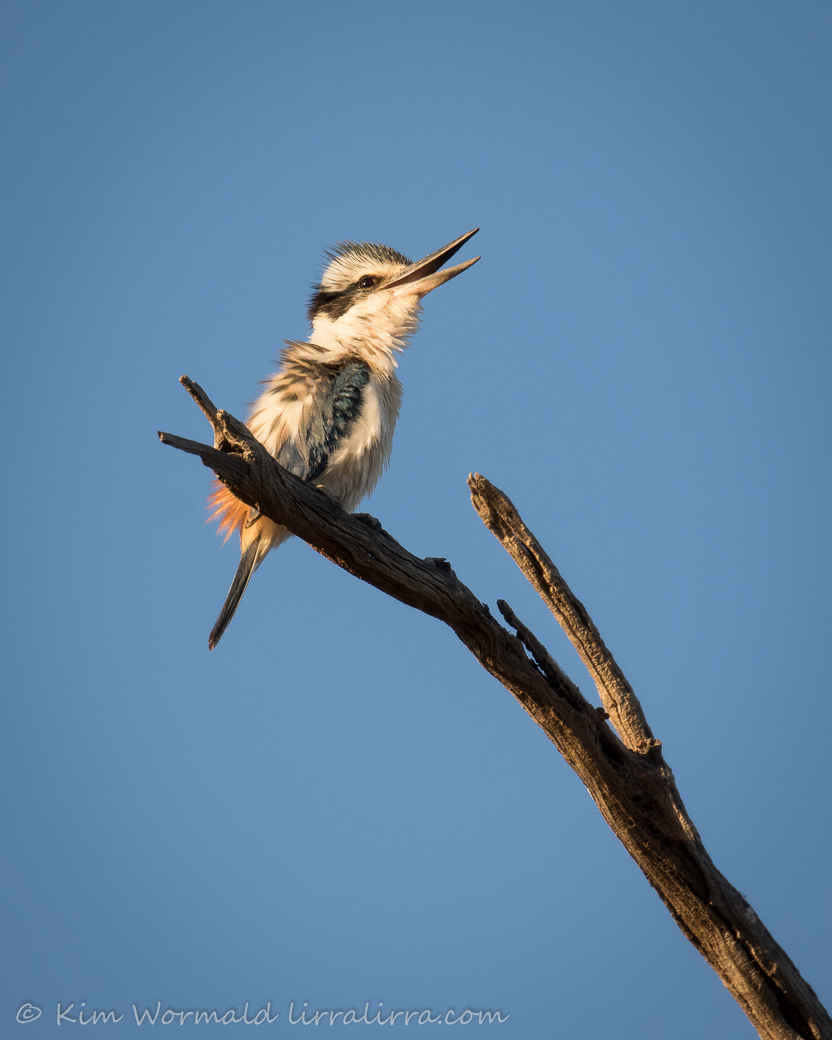 Red-backed Kingfisher
Red-backed Kingfisher
‘Photographed with the assistance of Australian Wildlife Conservancy’
I was heading out for an early morning series of bird surveys when I saw this kingfisher at the top of a tall stag, I drove on as I wanted to start my surveys on time but I had to stop the vehicle, grab my camera and run back to take a quick shot of this exquisite kingfisher with its red feathers peeking out from behind the perch.
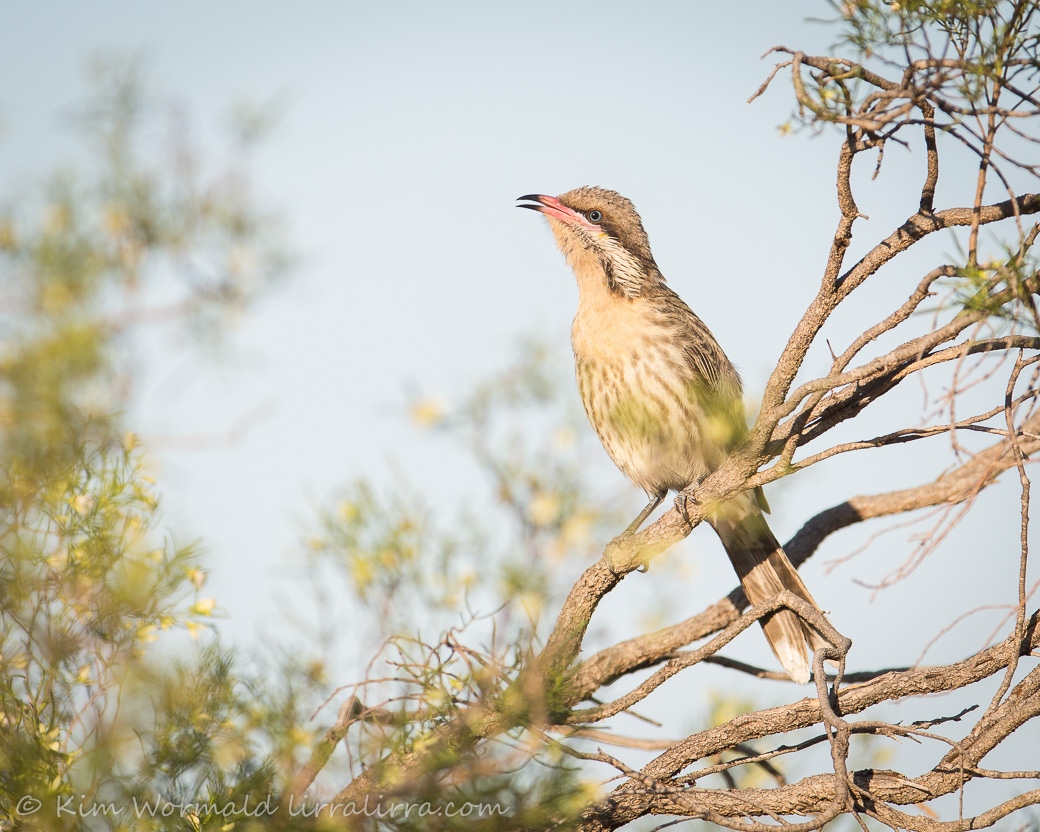
Spiny-cheeked Honeyeater
‘Photographed with the assistance of Australian Wildlife Conservancy’
I’ve never seen so many Spiny-cheeked Honeyeaters in one area but just about every image had something between the camera and the bird. They are distinctive birds with their spiny cheeks, two-tone bills, striated underparts and blue eyes. They are about 24cm long with a strange series of whistling calls that were a delight to listen to.
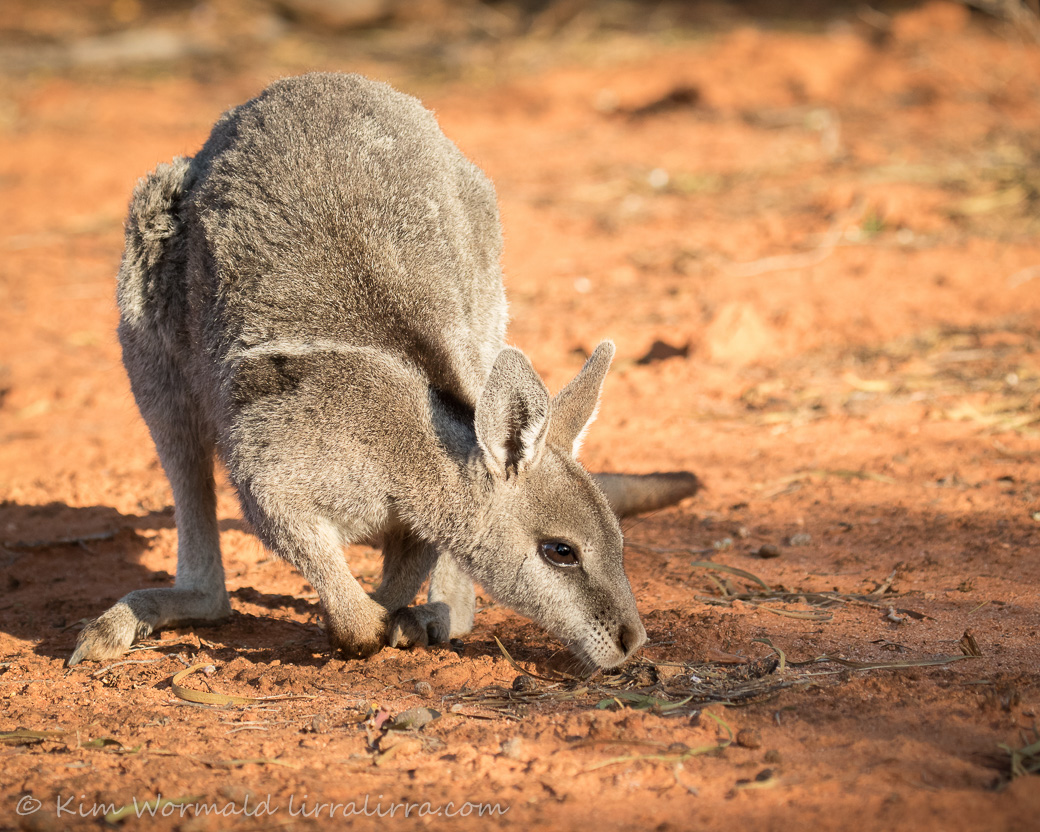 Bridled Nailtail Wallaby
Bridled Nailtail Wallaby
‘Photographed with the assistance of Australian Wildlife Conservancy’
The wallaby above is a male, they grow to about 8kg (which is 2kg larger than the female). They have a white ‘bridle’ that runs from behind their neck to the back of their forelimbs and a small spur at the end of their tails – the bridle and nailtail can both be seen in the image above. They were believed to be extinct until 1973 when they were rediscovered by a fencing contractor near Dingo in Queensland. Numbers in the wild have seriously declined due in part to competition for food and predation by foxes and cats. As detailed on the Australian Wildlife Conservancy website: ‘Scotia Wildlife Sanctuary currently supports the largest population of Bridled Nailtail Wallabies in the country. This population comprises of two groups established in feral predator free areas (each around 4,000ha in size).’ More information on the species is available at the AWC link below.
Rufous Hare-wallaby – Mala
‘Photographed with the assistance of Australian Wildlife Conservancy’
The Rufous Hare-wallaby or Mala is believed to be extinct in the wild. They are small marsupials reaching a weight of between 700g-2000g. The image above shows a female with a pouch baby weighing her down. The image was taken by torch light at an ISO of 6400 so is very grainy but I was thrilled to see this species and took many photographs. On a scientific expedition to the Great Sandy Desert in 2004 we were briefly excited when the small mammal experts thought they’d found Mala tracks but we didn’t manage to catch one or see more tracks; I’ve been looking forward to seeing Mala for a long time!
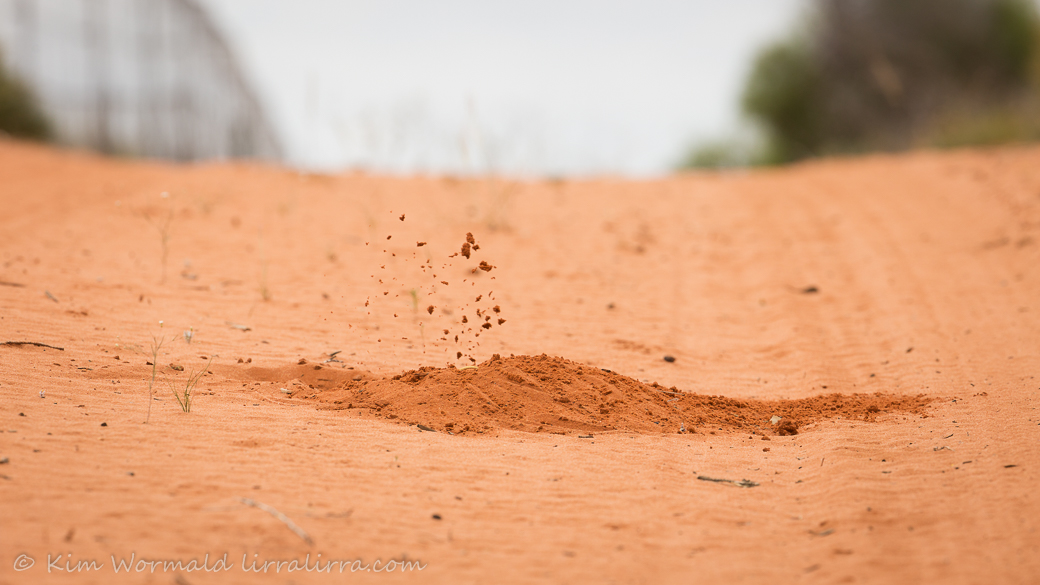
Sand throwing mystery
‘Photographed with the assistance of Australian Wildlife Conservancy’
I was driving along the fence lines looking for reptiles when I came over the dune (above and below) and saw sand being tossed into the air. There was no time to stop until I’d passed the activity; I pulled over and sat watching, waiting and smiling, a lot.
‘Photographed with the assistance of Australian Wildlife Conservancy’
Sand Goanna
‘Photographed with the assistance of Australian Wildlife Conservancy’
After a while this stunning Sand Goanna looked up to investigate the fairly distant click of the camera’s shutter button.
Sand Goanna
‘Photographed with the assistance of Australian Wildlife Conservancy’
I don’t know enough about reptiles to know if the one above has just eaten or whether it has distended it’s throat. I’ve researched ‘crops’ and ‘gizzards’ and neither of those topics have helped. This specimen looks as though it has been in a fight from the wounds on its back. I find their markings quite beautiful and very reminiscent of central Aboriginal artwork.
Next week it’ll be back to birds, probably small bush birds as I’ve been spending quite a bit of time with fantails, fairy-wrens and robins over the past couple of weeks.
Happy birding, Kim
Link:
~ Thank you for visiting and commenting
~ If you would like a weekly email letting you know that lirralirra has been updated please use the ‘subscribe’ box above right
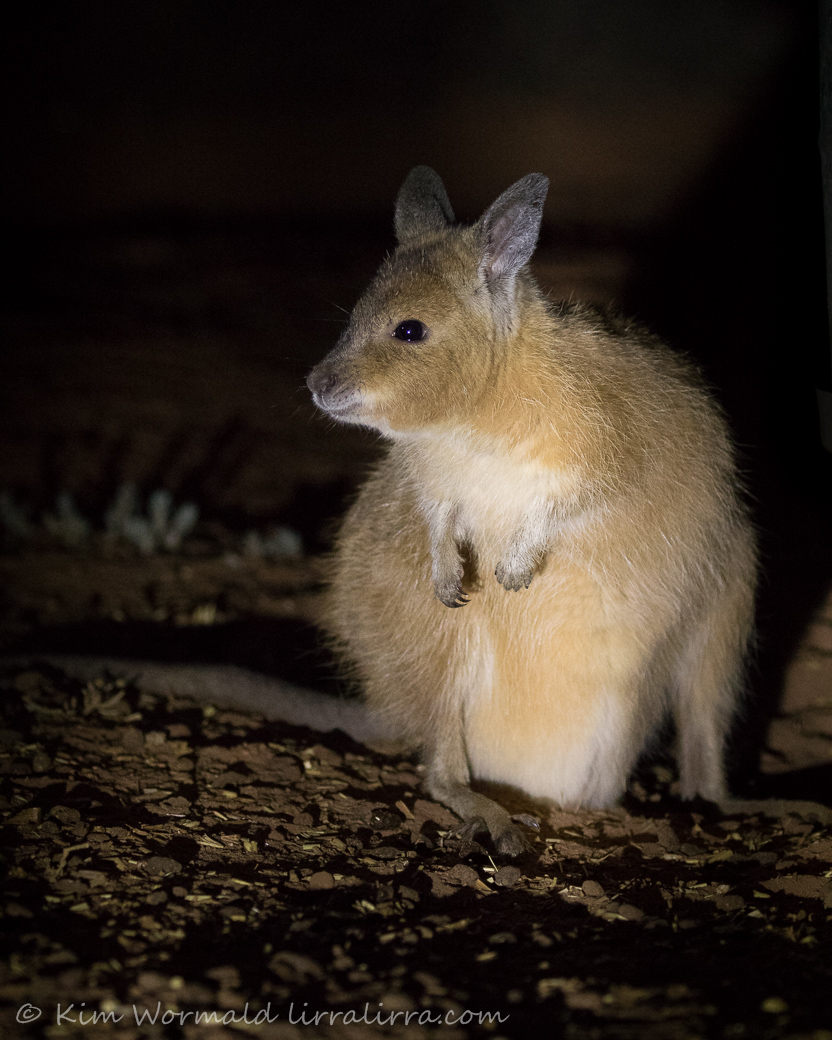
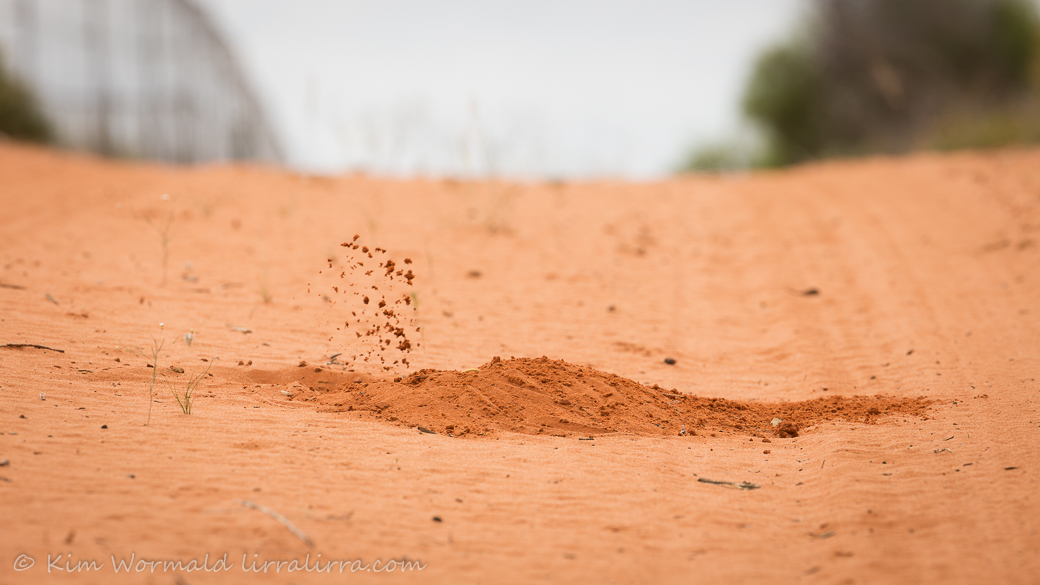
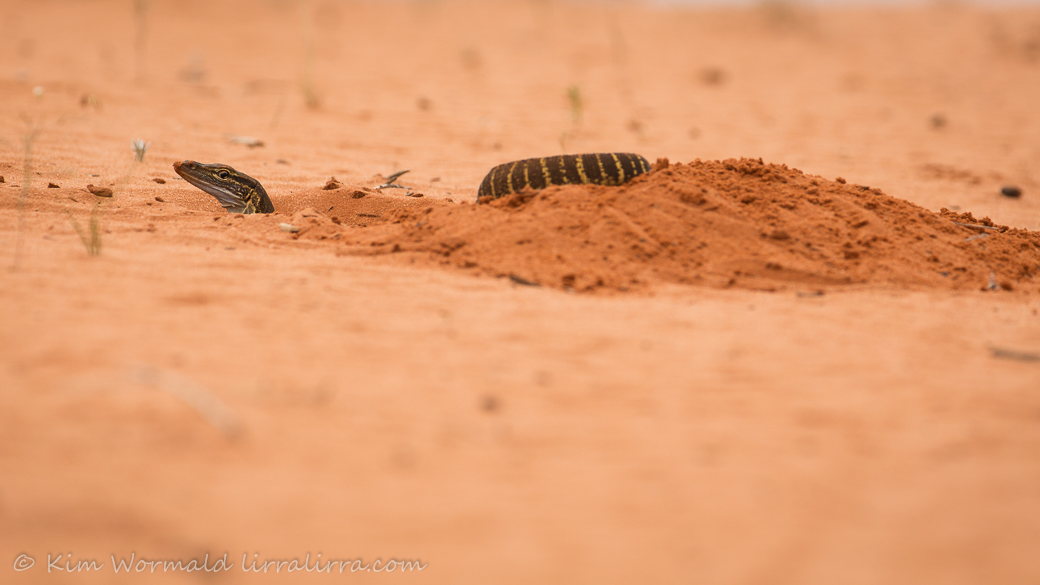


Gorgeous photos! I love seeing all these amazing creatures that I had never heard of before! How beautiful and wonderful 🙂
We’ve got some beautiful critters here that we rarely hear about, I’m glad you liked seeing the images 🙂
These are amazing and I can almost feel your buzz in being able to capture them – especially the Mala – what an honor and relief to know they aren’t extinct! All of your images are stunning as always (gotta keep repeating that) and honestly it is kinda fun to see the other creatures you share your land with!
There are some very interesting critters over here Sherry. I was thrilled to see the Mala 🙂
Multiple treats today. I have scrolled up, I have scrolled down, and can’t decide on a favourite.
Thank you so much.
And your calendar, which is going to himself’s sister (if I can bear to relinquish it) arrived this week. It is every bit as beautiful as I expected.
I’m so pleased you like the calendar, thank you EC for supporting CADS, very much appreciated
exquisite photos kim, and the commentary entertaining and enlightening. thanks!
glenn
I’m glad you enjoyed the post Glenn 🙂